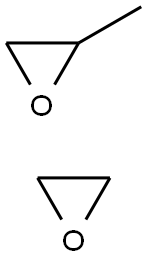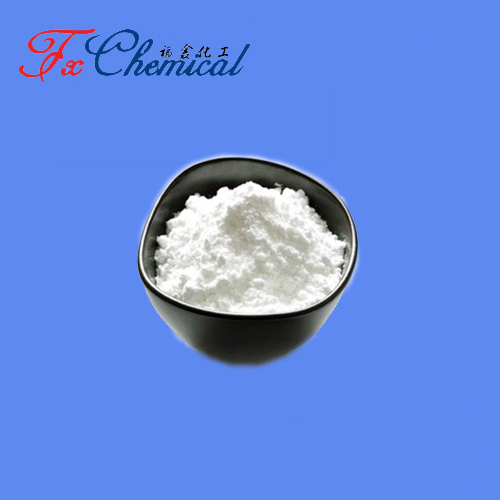Polyethylene-polypropylene glycol
9003-11-6 Basic informationMore
- Product Name:Polyethylene-polypropylene glycol
- Synonyms: Polymerofmethyloxiraneandoxirane polyoxyethylene-oxy-propylene proxanoltsl-3 rc102 ucon75-h-1400 pluronic F-127 cell culture tested PLURONIC F-127, PROTEIN GRADEDetergent, 10% Solution pluronic F-68 plant cell culture tested
- CAS:9003-11-6
- MF:(C3H6O.C2H4O)x
- MW:102.13
- EINECS:618-355-0
- Mol File:9003-11-6.mol
-

USE
<p><span style="font-size:13px">Polyethylene-polypropylene glycol</span> is a liquid surfactant polymer.</p>
<p><span style="font-size:13px">Polyethylene-polypropylene glycol</span> generally occur as white, waxy, free-flowing prilled granules, or as cast solids. They are practically odorless and tasteless. At room temperature, poloxamer 124 occurs as a colorless liquid.</p>
<p><span style="font-size:13px">Polyethylene-polypropylene glycol</span> is stable materials. Aqueous solutions are stable in the presence of acids, alkalis, and metal ions. However, aqueous solutions support mold growth.<br>
The bulk material should be stored in a well-closed container in a cool, dry place.</p>
<p><span style="font-size:13px">Polyethylene-polypropylene glycol</span> is used in a variety of oral, parenteral, and topical pharmaceutical formulations, and are generally regarded as nontoxic and nonirritant materials.<span style="font-size:13px">Polyethylene-polypropylene glycol is </span> not metabolized in the body.<br>
Animal toxicity studies, with dogs and rabbits, have shown <span style="font-size:13px">Polyethylene-polypropylene glycol</span> to be nonirritating and nonsensitizing when applied in 5% w/v and 10% w/v concentration to the eyes, gums, and skin.<br>
In a 14-day study of intravenous administration at concentrations up to 0.5 g/kg/day to rabbits, no overt adverse effects were noted. A similar study with dogs also showed no adverse effects at dosage levels up to 0.5 g/kg/day. In a longer-term study, rats fed 3% w/w or 5% w/w of poloxamer in food for up to 2 years did not exhibit any significant symptoms of toxicity. However, rats receiving 7.5% w/w of poloxamer in their diet showed some decrease in growth rate.<br>
No hemolysis of human blood cells was observed over 18 hours at 25°C, with 0.001–10% w/v poloxamer solutions.<br>
(mouse, IV): 1 g/kg<br>
(mouse, oral): 15 g/kg<br>
(mouse, SC): 5.5 g/kg<br>
(rat, IV): 7.5 g/kg<br>
(rat, oral): 9.4 g/kg</p>
<p><span style="font-size:13px">Polyethylene-polypropylene glycol is</span> nonionic polyoxyethylene–polyoxypropylene copolymers used primarily in pharmaceutical formulations as emulsifying or solubilizing agents.The polyoxyethylene segment is hydrophilic while the polyoxypropylene segment is hydrophobic. All of the <span style="font-size:13px">Polyethylene-polypropylene glycol</span> is chemically similar in composition, differing only in the relative amounts of propylene and ethylene oxides added during manufacture. Their physical and surface-active properties vary over a wide range and a number of different types are commercially available;<br>
<span style="font-size:13px">Polyethylene-polypropylene glycol is </span> used as emulsifying agents in intravenous fat emulsions, and as solubilizing and stabilizing agents to maintain the clarity of elixirs and syrups. <span style="font-size:13px">Polyethylene-polypropylene glycol</span> may also be used as wetting agents; in ointments, suppository bases, and gels; and as tablet binders and coatings.<br>
Poloxamer 188 has also been used as an emulsifying agent for fluorocarbons used as artificial blood substitutes, and in the preparation of solid-dispersion systems. More recently,<span style="font-size:13px">Polyethylene-polypropylene glycol</span> has found use in drug-delivery systems.<br>
Therapeutically, poloxamer 188 is administered orally as a wetting agent and stool lubricant in the treatment of constipation; it is usually used in combination with a laxative such as danthron. <span style="font-size:13px">Polyethylene-polypropylene glycol</span> may also be used therapeutically as wetting agents in eye-drop formulations, in the treatment of kidney stones, and as skin-wound cleansers.<br>
Poloxamer 338 and 407 are used in solutions for contact lens care.</p>
<p><span style="font-size:13px">Polyethylene-polypropylene glycol</span> is used in a variety of oral, parenteral, and topical pharmaceutical formulations, and are generally regarded as nontoxic and nonirritant materials.<span style="font-size:13px">Polyethylene-polypropylene glycol is </span> not metabolized in the body.<br>
Animal toxicity studies, with dogs and rabbits, have shown <span style="font-size:13px">Polyethylene-polypropylene glycol</span> to be nonirritating and nonsensitizing when applied in 5% w/v and 10% w/v concentration to the eyes, gums, and skin.<br>
In a 14-day study of intravenous administration at concentrations up to 0.5 g/kg/day to rabbits, no overt adverse effects were noted. A similar study with dogs also showed no adverse effects at dosage levels up to 0.5 g/kg/day. In a longer-term study, rats fed 3% w/w or 5% w/w of poloxamer in food for up to 2 years did not exhibit any significant symptoms of toxicity. However, rats receiving 7.5% w/w of poloxamer in their diet showed some decrease in growth rate.<br>
No hemolysis of human blood cells was observed over 18 hours at 25°C, with 0.001–10% w/v poloxamer solutions.<br>
(mouse, IV): 1 g/kg<br>
(mouse, oral): 15 g/kg<br>
(mouse, SC): 5.5 g/kg<br>
(rat, IV): 7.5 g/kg<br>
(rat, oral): 9.4 g/kg</p>
Lastest Price from Polyethylene-polypropylene glycol manufacturers
- Polyethylene-polypropylene glycol
-

- US $5.00-0.50/KG
- CAS:9003-11-6
- Min. Order: 1KG
- Purity: 99% hplc
- Supply Ability: 500TONS
- 2025-05-07
- Poloxamer 188
-

- US $80.00-37.50/kg
- CAS:9003-11-6
- Min. Order: 1kg
- Purity: 82.3%
- Supply Ability: 1000
- 2025-04-21
Browse by Nationality 9003-11-6 Suppliers >Global suppliers
Beijing (27) Shanghai (115) Tianjin (8) Chongqing (2) Sichuan (8) Guangdong (30) Zhejiang (19) Fujian (4) Hunan (5) Hubei (168) Shandong (30) Henan (11) Hebei (28) Liaoning (4) Heilongjiang (1) Anhui (6) Jiangsu (58) Jiangxi (3) Shaanxi (13) Xinjiang (2) Hong Kong (2) Other (4) Member (526) All (548)
Please select the suppliers
Recommend You Select Member Companies
Recommend You Select Member Companies
- Company Name:Wuhan Dingxintong Pharmaceutical Co. , Ltd.
- Tel:027-83984790 17720532645
- Products Intro:Product Name:Poloxalene
CAS:9003-11-6
Purity:P407巴斯夫原装90KG/桶,可以提供样品【原装正品】,提供13%增票 Package:1桶/RMB 20000 - CB Index:58
- Related Information:Catalog(984)
- Company Name:nantong chenrun chemical co.,ltd
- Tel:+86-0513-88743581 +86-15358700783
- Products Intro:Product Name:Pluronic 17R2/Synative RPE1720
CAS:9003-11-6
Purity:99 Package:200KG/RMB 10 More... - CB Index:60
- Related Information:Catalog(457)
- Company Name:Wuhan Yuqing Jiaheng Pharmaceutical Co., Ltd
- Tel:027-83855382 15926260338
- Products Intro:Product Name:synperonicpeR/F68
CAS:9003-11-6
Purity:99.5% Package:102KG/纸板桶/RMB 160 - CB Index:58
- Related Information:Catalog(2030)
- Company Name:Zhongxiang Yaowei Biological Technology Co., Ltd.
- Tel:15337241005 13260682861
- Products Intro:Product Name:188Polyethylene-polypropyleneglycol
Purity:99% HPLC Package:25KG;1KG - CB Index:58
- Related Information:Catalog(2435)
- Company Name:Shanghai Yikefan Biotechnology Co., LTD
- Tel:18221419461; 18221419461
- Products Intro:Product Name:Surfactant S2
CAS:9003-11-6
Purity:/ Package:500g;1000g;25000g - CB Index:58
- Related Information:Catalog(612)
- Company Name:Dalian Meilun Biotech Co., Ltd.
- Tel:0411-62910999 13889544652
- Products Intro:Product Name:Polyethylene-polypropyleneglycol
CAS:9003-11-6
Purity:M.W12000 Package:25g;100g Remarks:MB1968 More... - CB Index:58
- Related Information:Catalog(4730)
- Company Name:Xi'an Jinxiang Pharmaceutical Accessories Co., Ltd.
- Tel:029-19991803015 19991803015
- Products Intro:Product Name:Poloxamer 407
CAS:9003-11-6
Purity:9840~14600 Package:1kg;90kg - CB Index:58
- Related Information:Catalog(310)
- Company Name:Ningbo Lai with new material technology Co., LTD
- Tel:0574-8907-3071 13819841515
- Products Intro:Product Name:Aliphatic urethane hexaacrylate
CAS:9003-11-6
Purity:100% - CB Index:58
- Related Information:Catalog(54)